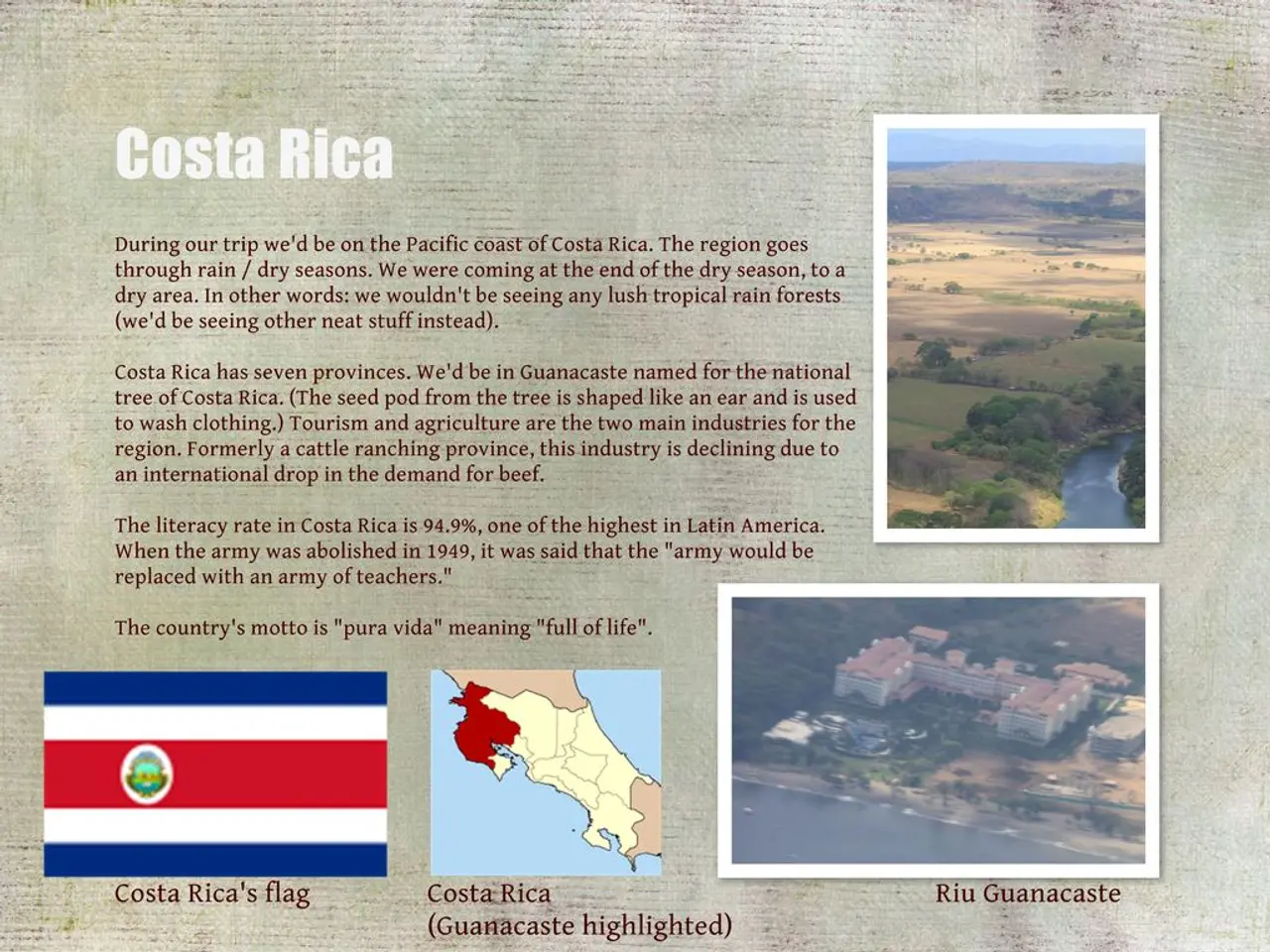smallest Nations with the fewest inhabitants (and seven minuscule counterparts)
In the vast expanse of our world, there are tiny nations that, despite their size, have unique stories to tell. Let's take a journey to explore some of these microstates and their economies.
Montserrat, a British overseas territory in the Caribbean, is home to over 4,000 residents. However, its population recovery remains slow due to a devastating volcanic eruption in the 1990s. The economy of neighbouring Saint Kitts and Nevis, with a population of approximately 50,000 residents, relies heavily on tourism and offshore banking.
Moving towards the Pacific, we find the Marshall Islands, made up of many small atolls and islands with a population of about 60,000. The economy here is primarily supported by U.S. aid and fishing rights. On the other hand, Palau, consisting of some 340 atolls and volcanic islands, is known for luxury tourism and rich marine biodiversity. Palau is in free association with the United States and has a population of under 20,000.
Nauru, once economically prosperous due to phosphate mining, now has a population of less than 13,000 residents. Tuvalu, a South Pacific island nation made up of nine small atolls, has a population of around 10,000 people. Both nations face challenges due to their remote locations and limited resources.
In Europe, we find San Marino, one of the world's oldest republics, with a population of approximately 34,000. Despite its small size, San Marino boasts a strong financial sector and high standard of living. Liechtenstein, another European microstate, shares similar attributes. With around 39,000 citizens, Liechtenstein’s economic prosperity and high living standards are mainly due to its strategic location in Europe, a strong financial services sector, a stable political system with a favorable tax regime, and a focus on high-value industries such as manufacturing and finance. Additionally, Liechtenstein’s small size and limited resources naturally constrain population growth.
Saint Pierre and Miquelon, a French overseas collectivity near Canada, has fewer than 6,000 residents. The harsh sub-Arctic climate and remote North Atlantic location have kept population growth low here.
Lastly, we come to Vatican City, the smallest country in the world, with an estimated population of approximately 800 residents. Despite its size, Vatican City is a global cultural and spiritual hub, attracting millions of visitors each year.
Each of these nations, despite their size, offers a unique perspective on the world and serves as a reminder that size is not always a measure of a nation's importance or potential.
Read also:
- Increase in train disruptions seen in 2021 by a factor of two
- Osteoarthritis and premature retirement: Entitlements and advantages
- Tesla introduces Model Y in China to bolster sales, causing stress for domestic competitors
- Uncovering the Purpose and Distinctiveness of Human Fingerprints: An Exploration of Their Significance and Individuality







